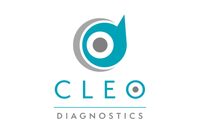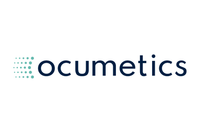
Understanding the keys to successfully bringing medtech innovations to market offers valuable insights for investors interested in medtech stocks.
In the medical technology industry, innovation is only the first step. While key to long-term success, innovation is only as good as a company’s commercialisation strategy. Once a technology has been developed and proven, the organisation must then embark on a process to commercialise it for revenue generation.
The strategy a company leverages to pursue commercialisation is a crucial ingredient in building a successful and profitable venture.
Investors would do well to understand the distinctive process and strategies required to bring medtech solutions to market to help them make more informed investment decisions.
Exploring a promising market landscape
This has been a time of unprecedented disruption for medtech. As a result, the industry now faces a challenging macroeconomic climate, according to McKinsey & Company in the firm's medtech outlook. In their efforts to bring products to commercialisation, medtech companies must contend with high inflation, constrained capital markets, rising geopolitical tensions and mounting investor skepticism.
McKinsey further notes that as a result of these factors, value creation in medtech has decelerated since 2019. Interestingly, industry leaders are addressing this problem by adopting and adapting practices and strategies from other sectors, such as SaaS (software-as-a-service) development, marketing and consumer goods.
These strategies, according to McKinsey, include incorporating agile development and analytics into research and development; creating an omnichannel patient experience through personalised treatment and engagement; rebuilding supply chains with a focus on digitisation; and committing to environmental, social and governance initiatives.
Concurrently, medtech companies are also increasingly focused on software innovation, particularly bringing together software and hardware into a unified ecosystem to improve patient outcomes.
Challenges aside, the overall outlook for medtech in 2024 is largely positive. McKinsey expects industry growth to stabilise at a higher average level than pre-pandemic as investors increasingly prioritise profitability and cash flow. McKinsey also notes that the United States Food and Drug Administration (FDA) approved more novel medical technologies in 2023 than any single year in history.
This, the firm contends, will make 2024 a banner year for innovation — though performance across geographies will likely remain uneven, with China, Japan and the United States projected to contribute roughly two-thirds of near-term growth.
Keys to bringing medical innovation to market
Because healthcare is highly regulated, commercialising a medical product comes with several unique considerations.
First is the question of stability and viability. As an example, Forbes notes innovations related to the rapid diagnosis of COVID-19 were immensely popular during the peak of the pandemic. However, as the virus reached its endemic stage, many companies closed down after failing to branch out commercially.
Moreover, as noted by Consonance, the most innovative products typically challenge established systems and processes — companies must, therefore, be prepared to provide prospective investors with a concrete demonstration of value. The International Journal of Scientific Research and Engineering Development also suggested that commercial medtech companies must provide demonstrable value in comparison with existing approaches.
When seeking funding for a medical innovation, a company must balance priorities from multiple types of investors. Venture capital firms typically seek fast financial returns, research grants focus on the innovation itself and non-profits are typically more interested in the impact of the technology. Taking into consideration the different types of stakeholders and investors against your company’s values and strategic visions are key.
Attracting investors and funding can be challenging, but it is also necessary due to the high cost of clinical trials and the expenses associated with creating marketable products. This is because product development for medtech is both extremely complex and also subject to regulatory oversight. Medtech products must be designed according to strict health and safety guidelines while also undergoing rigorous testing and certification, which typically includes one or more clinical trials. This process is both time- and resource-intensive, often taking an average of three to seven years.
Marketing must also be a top priority, and it's something that medical researchers often overlook as they focus primarily on research and development. Even a highly compelling innovation cannot succeed if no one knows it exists. When doing so, medtech companies must bridge the gap between academic research and business development. This means developing strategies to effectively communicate the value of the technology in a way that resonates with the target audience, who may not necessarily be technically adept in processes and terminologies, for example.
There are several keys to successfully addressing these concerns and forging a path to commercialisation for medtech innovations. First and foremost is embracing a patient-centric strategy. Focusing on the patient experience during product development increases the likelihood of adoption.
Addressing some knowledge gaps within the company is also important. Researchers are not necessarily marketers. Engaging professional expertise that can bridge the gap between scientists and physicians, the developers and the users, can address marketing and communications challenges as the company brings their product to market.
Lastly, emerging technologies such as AI, and best practices such as agile development can greatly improve both viability and attractiveness to investors.
It's important to note that success is not solely down to individual healthcare companies. The market landscape into which a product is released matters just as much. Incubator programs, government funding initiatives and a strong collaborative ecosystem are all critical to success.
Examples of successful medtech commercialisation
The barrier to entry for medtech companies can be incredibly steep, but those that have demonstrated a track record of successful commercialisation are worth noting. What characteristics do medtech companies that have successfully commercialised their innovations have in common?
A strong portfolio of both solutions and research, for one. Digital healthcare company Cardiex (ASX:CDX) is an excellent example in that regard. Not only does it hold 24 US and international patents, but its SphygmoCor technology has also been featured in more than 2,400 peer-reviewed studies from leading medical and scientific journals.
Technology aside, strategy is also critical. To that end, Cardiex is exploring multiple licensing and co-development opportunities in both the medical and consumer health segments, as well as future applications in multiple other categories.
Novel technology is also a must. Atmo Biosciences, for instance, has developed the Atmo Gas Capsule, an ingestible medical device that offers an unprecedented level of insight into both gut health and microbiome function. This technology took multiple years to develop, and entered its first clinical trials in 2018.
Atmo maintains a large body of research associated with its gas capsule, as well.
Collaboration is another important piece of the puzzle. Medtronic (NYSE:MDT) is one of the world's leading medical technology companies — but it didn't get there alone. The company works with organisations all over the world to develop and distribute its products, including the American Society of Anesthesiologists, Evidence Based Perioperative Medicine, the DAISY Foundation and the American Association for Respiratory Care.
Investor takeaway
The path to commercialisation for medical technology is not the same as that for other innovations. It is both complex and challenging, with multiple barriers to entry along the way. Those that have demonstrated successful commercialisation of their innovation, and the keys to their success, can provide valuable insights for investors.
This INNspired article is sponsored by Cardiex (ASX:CDX). This INNspired article provides information which was sourced by the Investing News Network (INN) and approved by Cardiex in order to help investors learn more about the company. Cardiex is a client of INN. The company’s campaign fees pay for INN to create and update this INNspired article.
This INNspired article was written according to INN editorial standards to educate investors.
INN does not provide investment advice and the information on this profile should not be considered a recommendation to buy or sell any security. INN does not endorse or recommend the business, products, services or securities of any company profiled.
The information contained here is for information purposes only and is not to be construed as an offer or solicitation for the sale or purchase of securities. Readers should conduct their own research for all information publicly available concerning the company. Prior to making any investment decision, it is recommended that readers consult directly with Cardiex and seek advice from a qualified investment advisor.






